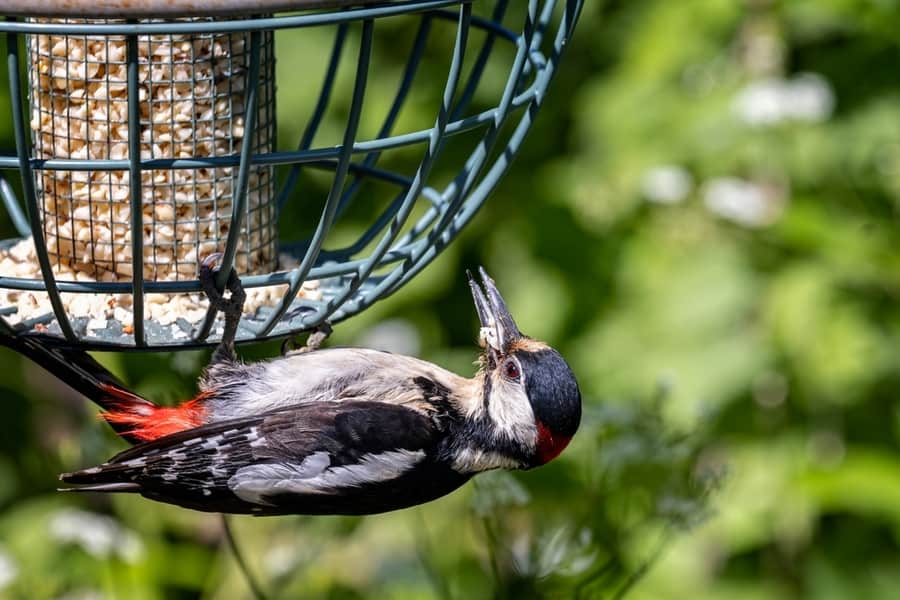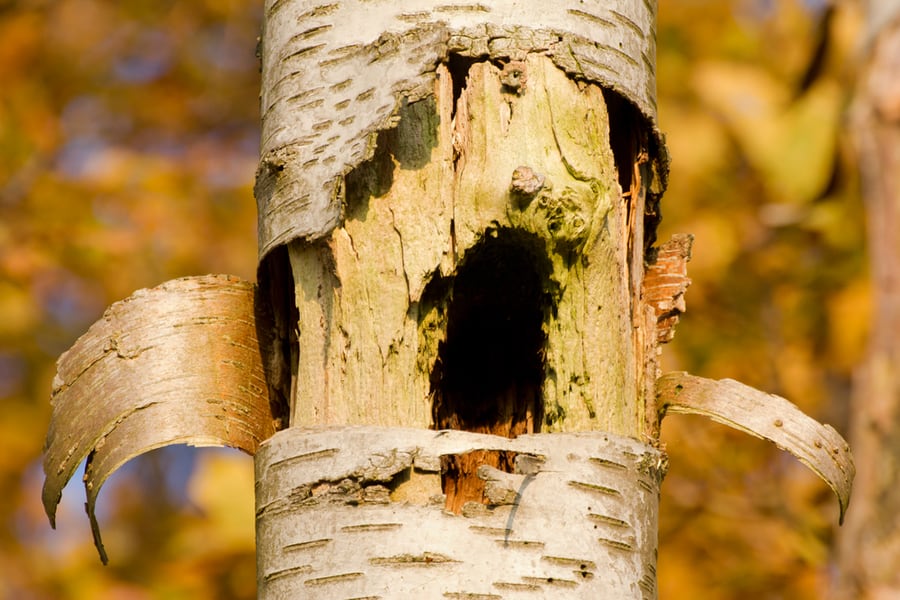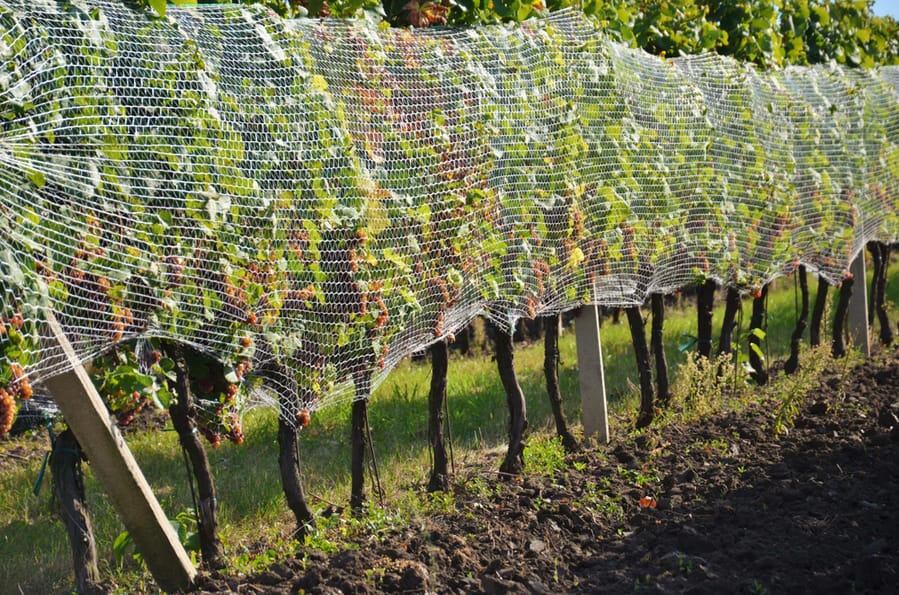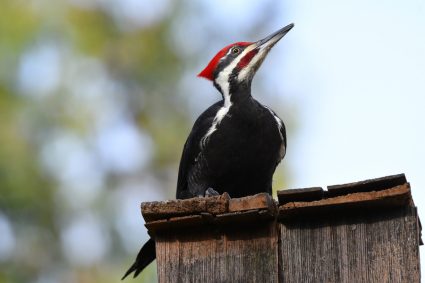
Woodpeckers are beautiful birds, considered a symbol of happiness in the past. They are unique in their search for food and building homes.
But they can be a nuisance for homeowners with wood sidings as they can easily cause severe damage to the sidings.
Several solutions are available to deter woodpeckers, some of which may be more successful than others depending on the type of wood siding and the specific area where it is located.
Thus, this article will discuss various approaches for preventing woodpeckers from damaging your home sidings.
The woodpecker is a cute, clever, and attractive bird that creates holes and scratches on the sidings of our home.
Various approaches could be fruitful in repelling woodpeckers from your house sidings, from removing their food sources to using deterrents and limiting the roosting areas to using dummy predators.
The following section will briefly discuss the 11 most effective methods to keep woodpeckers away from your house sidings. It will conclude with frequently asked questions about woodpeckers.
11 Effective Ways To Deter Woodpeckers From House Siding
Several methods can help you keep woodpeckers away. By taking steps to deter woodpeckers, you can prevent them from causing damage to your property and save yourself the expenses of repair.
Below is a detailed discussion about the 11 most effective methods to repel woodpeckers from your house sidings.
1. Remove the Food Source

One of the primary attractions for woodpeckers toward a specific home is that it harbors food within its walls.
This could be anything from insects to larvae to even spiders. Woodpeckers can detect these food sources and often uses their sharp bills to dig and peck at the walls to access them.
In addition, woodpeckers may also be attracted by any loose siding or rotting boards that make for easy access into the wall cavity.
Once inside, these birds can find plenty of insects and other critters that they can quickly eat.
2. Locate a Decoy Woodpecker Feeder

Woodpeckers can be a nuisance when they start pecking at your home.
While most homeowners may try to scare them off, a more effective way of discouraging woodpeckers is by luring them away with tasty treats in a feeder made for them.
Feeders explicitly designed for woodpeckers are readily available in most garden centres or home improvement stores.
While placing the feeder, ensure it is close to the area where woodpeckers are causing damage to draw the bird’s attention away from the house.
This will make it easy to keep an eye on their activity and provide an alternative food source that can help divert them from pecking at your home.
3. Use of Woodpecker Sound Deterrent

Like most birds, woodpeckers instinctively take flight when they hear sudden sounds. This behavior is instilled into them through evolution to protect them from potential predators.
When birds hear a loud sound, they fly away and hide until the perceived danger passes.
This instinct takes over so quickly that they don’t even think about it before reacting. It’s simply an innate reaction passed down through generations of survival-minded birds.
By using sound deterrents, woodpeckers can be repelled without any potential threat to their life. It’s an efficient method that keeps these feathered friends safe and away from your home sidings.
4. Install Decoy Wookpecker Predator

The most effective way to eliminate these annoying birds from your home sidings is to make them think that predators are near your home.
For this, dummy predators can be used.
Before proceeding further, it’s crucial to know what animals eat woodpeckers. Generally, the primary predators of woodpeckers are owls, hawks, and cats; snakes also prey on these birds.
Owls hunt woodpeckers at night, while hawks look for them during the day. Cats have also been known to hunt smaller species of woodpeckers in urban and rural areas.
Snakes like king snakes can climb trees that house these birds or sometimes ambush them from below when they land. Thus, using these dummies could be a practical approach.
5. Install a Wookpecker Net

Another effective solution is bird netting. This is the best option for larger areas as it provides a durable barrier to prevent woodpeckers from roosting.
Bird’s netting should be installed with enough slack to rest at least one foot away from the walls of buildings or other structures that can attract woodpeckers.
This effective approach also allows airflow and free bird movement.
However, the netting should have a 1/4 inch or smaller mesh size, which, besides woodpeckers, will also keep out small birds like sparrows and starlings.
6. Remove Roosting Areas

Roosting is integral to a bird’s life; it provides them security, warmth, and shelter.
Removing roosting is a simple and effective way to curtail their population and prevent further damage caused by these birds.
The first step in this approach is identifying the woodpecker species. As different types prefer different habitats, knowing which you are dealing with is essential before applying any control method.
Once you have identified them, look around the property for their possible roosting and remove them.
7. Using Reflections To Scare Woodpeckers

Shiny and bright objects are deterrents to these birds, so installing things that reflect light could effectively keep them away from your house sidings.
You can hang reflective objects like Aluminium strips or CDs near their roosting. Also, place these reflective surfaces around trees the birds perch on.
8. Fix All the Holes in Your Home

Woodpeckers are interesting due to their unique behavior. If you have a woodpecker on your property, it’s vital to cover up any holes they could use to build their homes.
This can be done by placing mesh or netting over the area where the birds have been active, as this will discourage their nesting.
You can also fill the hole with foam insulation, making it difficult for them to create a nest in that location.
Additionally, you may put some dummy hawks and owls around the area, as they are their natural deterrents.
9. Wrap the Trees

Trees are primary feeding and nesting grounds for woodpeckers. Though typically, they do not severely damage trees, prolonged pecking can still cause damage over time.
However, for already weakened and diseased trees, this could be a menace.
Thus, it’s essential to preserve trees to minimize their potential food and roosting sources. The preferred method to protect trees from bird damage is to wrap them in material that deters birds.
Plastic nettings or chicken wires are effective for wrapping as they deter birds from perching.
10. Install a Woodpecker House

One of the most effective methods may seem counterintuitive; installing a woodpecker house.
By offering food and shelter to woodpeckers, they will find solace somewhere other than your trees or siding. This is especially useful if other birds are also present.
However, woodpeckers prefer cavities that are safe and away from the competition of larger birds and animals.
An ideal location for the house should have some protection from wind and rain but plenty of sunshine to keep it warm in the winter.
Once you are done with their house, you can attract these lovely feathered creatures with foods such as nuts and suet cakes.
11. Call a Professional

Woodpeckers can create large holes in home sidings and cause severe structural damage if left unattended.
So it is recommended to ask for expert advice to humanely deter these birds from the area and prevent them from returning.
Calling an experienced wildlife removal specialist or pest control company is the most effective way of getting rid of woodpeckers.
These professionals will have experience in dealing with these types of birds and have access to a wide range of safe and humane removal techniques.
They can also advise how to make your property less attractive for woodpeckers after an on-site inspection.
However, before hiring a company, ensure that they follow environmental regulations.
Among the red flags to watch out for is if they offer services that can capture, harm, or kill woodpeckers without having the necessary permits.
Conclusion
Deterring woodpeckers from house sidings is challenging but manageable. When deterring woodpeckers from house sidings, diligence and patience is key.
Taking preventive measures such as hanging reflective objects, applying noise-making repellents, or using a bird spike can help to keep woodpeckers away.
If the problem exists, consulting with a professional wildlife expert is recommended.
Frequently Asked Questions
Why Is It Essential To Deter Woodpeckers?
Besides being an iconic part of nature, woodpeckers could be a nuisance. Their damage to buildings and other structures could be significant and costly.
That is why it’s essential to deter woodpeckers from your property.
What Type of Netting Is Suitable for Deterring Woodpeckers?
Standard Bird-X Large-scale UV-stabilised material is used to create bird netting.
Establishing a secure barrier between birds and the protected siding helps prevent their reach to sidings.
How Are Spikes Effective for Deterring Woodpeckers?
For woodpeckers, bird spikes are an excellent solution to prevent them from roosting. This approach can keep them out permanently.
Bird spikes don’t hurt the birds; they only make it difficult to sit on your siding.










